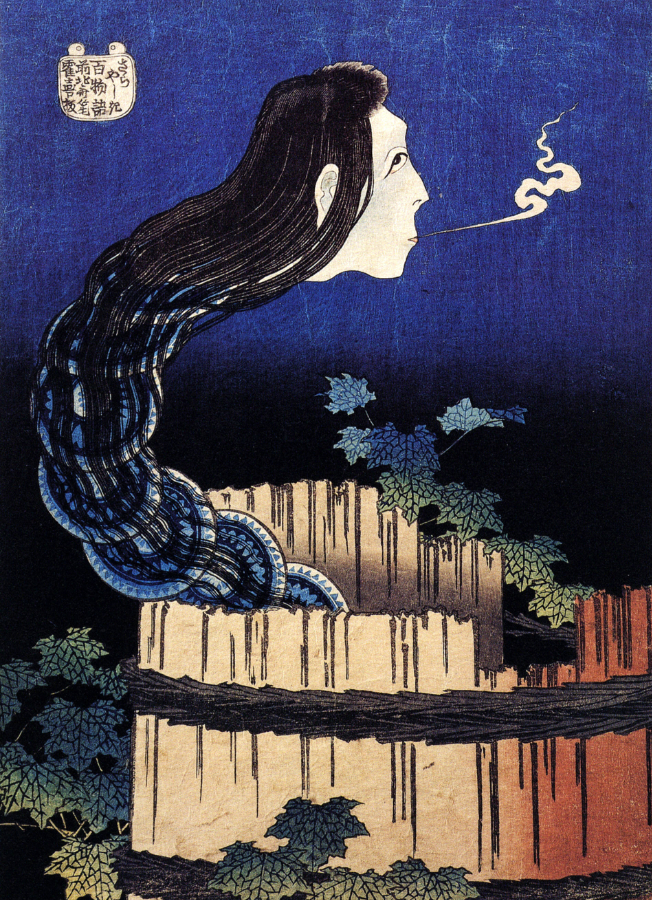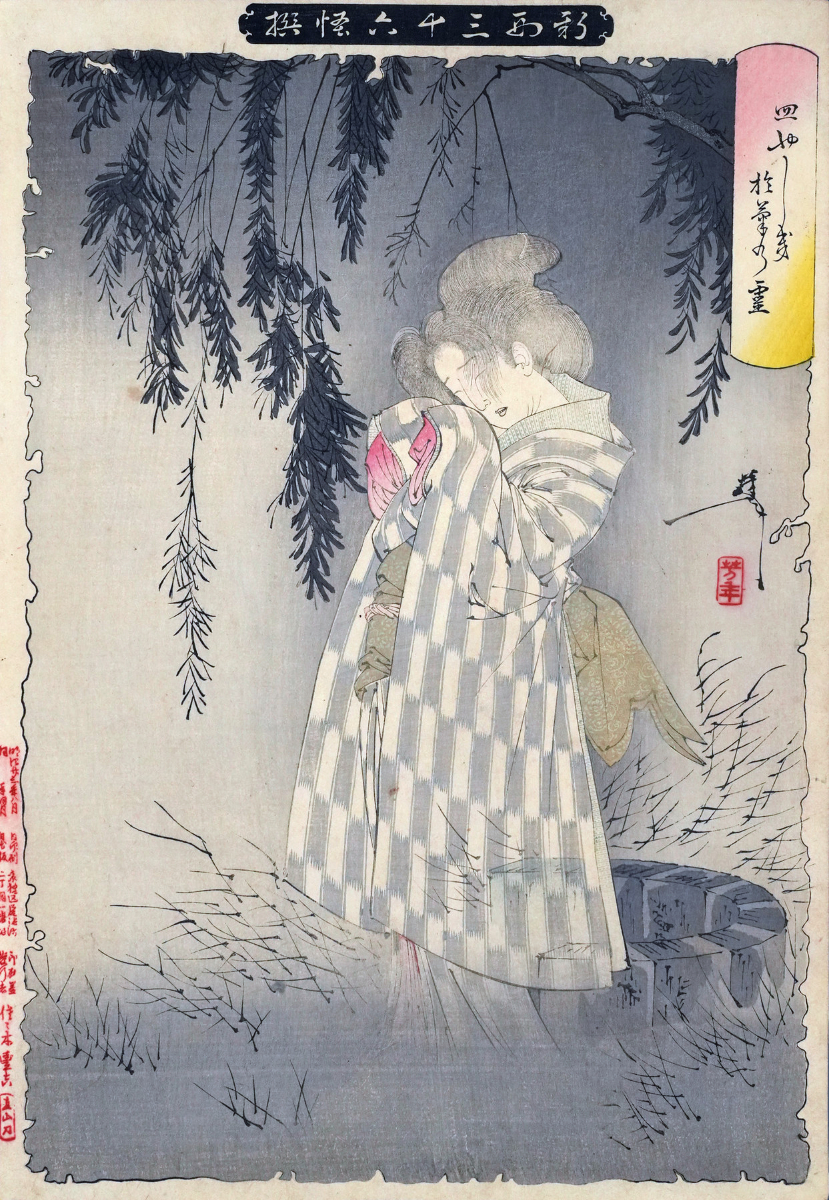The legend from 17th century tells the story of a maid named Okiku who breaks a valuable set of Korean plates. The tale varies slightly on the events that happen next. In one version, she is thrown into a well by her master; another version tells that Okiku threw herself into the well in despair. Another version tells that Okiku broke only one plate. After she is thrown into a well, she turns into a Yūrei. The neighbours hear her voice from that well every night, repeating “One… Two… Three… Eight… Nine… I can’t find last one…” After the rumors of this spread, the house was confiscated from the master. When a monk adds “ten” to Okiku’s count, she finally disappears. Yet another version tells that Okiku worked for a samurai named Aoyama Tessan from Himeji Castle who makes advances on her. After she rejects him, Aoyama deceives her into believing that she lost one of the valuable plates. Aoyama offers his forgiveness if Okiku becomes his lover. When she continues to refuse him, he throws her into a well. She then returns as a spirit to count her plates every night, “shrieking on the tenth count”. This is a well-known ghost story in Japan. The most popular version was established in 1795, when Japan suffered an infestation of a type of worm found in old wells that became known as the “Okiku bug” (Okiku mushi). This worm covered with thin threads made it look as though it had been bound. It was widely believed to be a reincarnation of Okiku. Hokusai drew Okiku’s spirit as a serpent whose body is made of a plates. Kassandra Diaz notes that while Okiku is a spirit, in Hokusai’s print she “resembles a rokurokubi or nure-onna. An intelligent decision on his part as these yokai are much rarer than yurei, make this Okiku scarier.”
| Alias Okiku |
| Real Names/Alt Names “Chrysanthemum”; Alt: Rokurokubi, Nure-onna |
| Characteristics Yōkai, Enlightenment and Neoclassicism |
| Creators/Key Contributors Unknown |
| First Appearance Japanese folklore |
| First Publisher ○ |
| Appearance List The Dish Mansion at Banchō (Ningyō Jōruri “Banchō Sarayashiki”, 1741) |
| Sample Read ○ |
| Description The legend from 17th century tells the story of a maid named Okiku who breaks a valuable set of Korean plates. The tale varies slightly on the events that happen next. In one version, she is thrown into a well by her master; another version tells that Okiku threw herself into the well in despair. Another version tells that Okiku broke only one plate. After she is thrown into a well, she turns into a Yūrei. The neighbours hear her voice from that well every night, repeating “One… Two… Three… Eight… Nine… I can’t find last one…” After the rumors of this spread, the house was confiscated from the master. When a monk adds “ten” to Okiku’s count, she finally disappears. Yet another version tells that Okiku worked for a samurai named Aoyama Tessan from Himeji Castle who makes advances on her. After she rejects him, Aoyama deceives her into believing that she lost one of the valuable plates. Aoyama offers his forgiveness if Okiku becomes his lover. When she continues to refuse him, he throws her into a well. She then returns as a spirit to count her plates every night, “shrieking on the tenth count”. This is a well-known ghost story in Japan. The most popular version was established in 1795, when Japan suffered an infestation of a type of worm found in old wells that became known as the “Okiku bug” (Okiku mushi). This worm covered with thin threads made it look as though it had been bound. It was widely believed to be a reincarnation of Okiku. Hokusai drew Okiku’s spirit as a serpent whose body is made of a plates. Kassandra Diaz notes that while Okiku is a spirit, in Hokusai’s print she “resembles a rokurokubi or nure-onna. An intelligent decision on his part as these yokai are much rarer than yurei, make this Okiku scarier.” |
| Source The Plate Mansion (Sara-yashiki) – Wikipedia |


